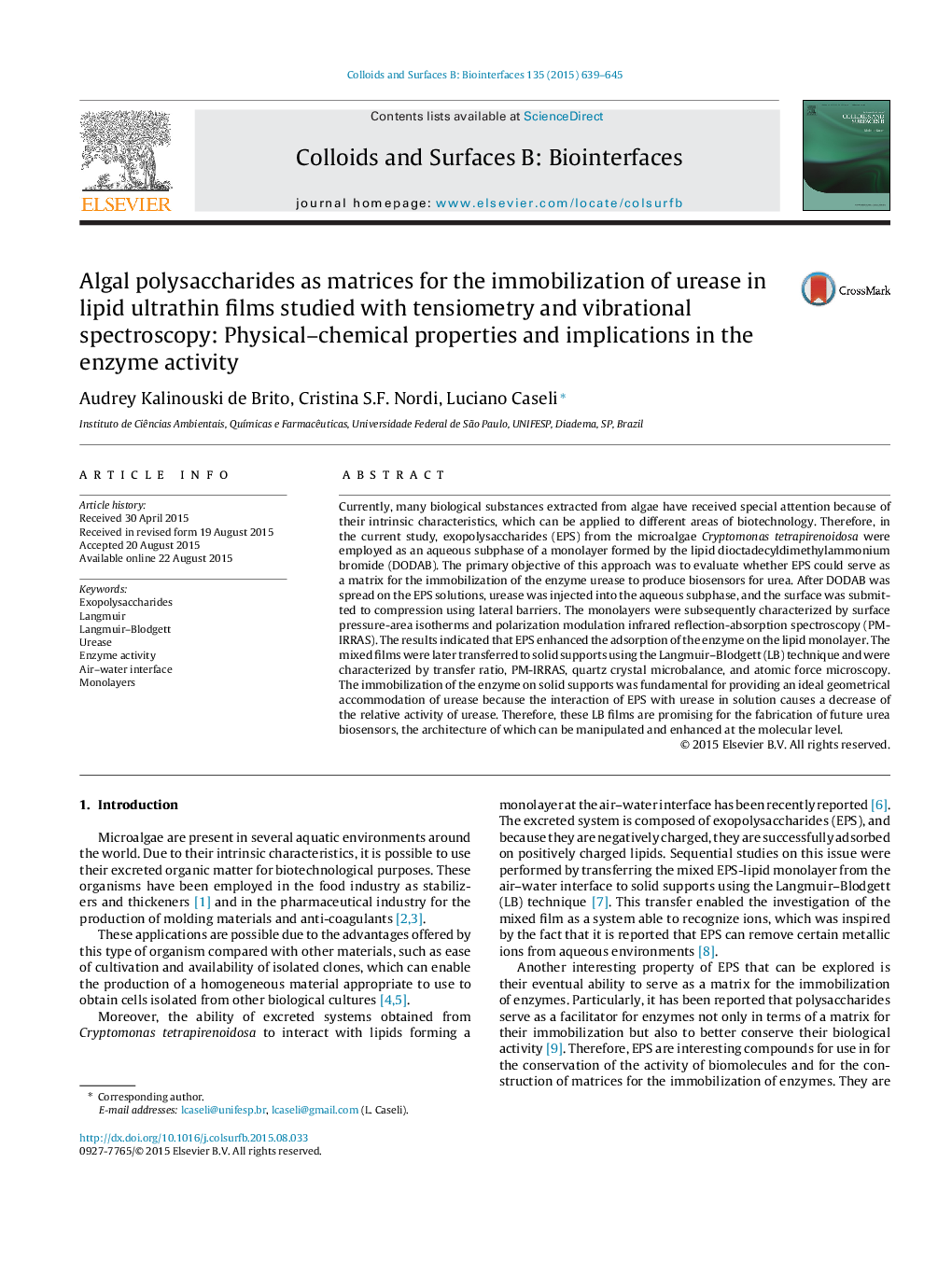| کد مقاله | کد نشریه | سال انتشار | مقاله انگلیسی | نسخه تمام متن |
|---|---|---|---|---|
| 599288 | 1454269 | 2015 | 7 صفحه PDF | دانلود رایگان |
• Algal polysaccharides are incorporated into the lipid monolayer.
• Urease adsorption is confirmed with tensiometry and infrared spectroscopy.
• Langmuir–Blodgett films of the enzyme present enzyme activity.
• Algal polysaccharides boost the enzyme activity.
Currently, many biological substances extracted from algae have received special attention because of their intrinsic characteristics, which can be applied to different areas of biotechnology. Therefore, in the current study, exopolysaccharides (EPS) from the microalgae Cryptomonas tetrapirenoidosa were employed as an aqueous subphase of a monolayer formed by the lipid dioctadecyldimethylammonium bromide (DODAB). The primary objective of this approach was to evaluate whether EPS could serve as a matrix for the immobilization of the enzyme urease to produce biosensors for urea. After DODAB was spread on the EPS solutions, urease was injected into the aqueous subphase, and the surface was submitted to compression using lateral barriers. The monolayers were subsequently characterized by surface pressure-area isotherms and polarization modulation infrared reflection-absorption spectroscopy (PM-IRRAS). The results indicated that EPS enhanced the adsorption of the enzyme on the lipid monolayer. The mixed films were later transferred to solid supports using the Langmuir–Blodgett (LB) technique and were characterized by transfer ratio, PM-IRRAS, quartz crystal microbalance, and atomic force microscopy. The immobilization of the enzyme on solid supports was fundamental for providing an ideal geometrical accommodation of urease because the interaction of EPS with urease in solution causes a decrease of the relative activity of urease. Therefore, these LB films are promising for the fabrication of future urea biosensors, the architecture of which can be manipulated and enhanced at the molecular level.
Figure optionsDownload as PowerPoint slide
Journal: Colloids and Surfaces B: Biointerfaces - Volume 135, 1 November 2015, Pages 639–645
